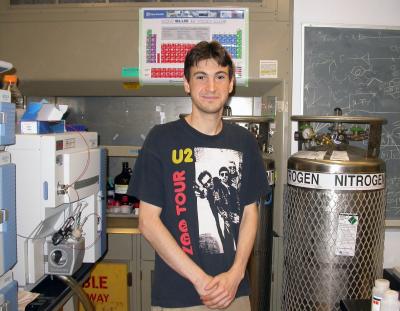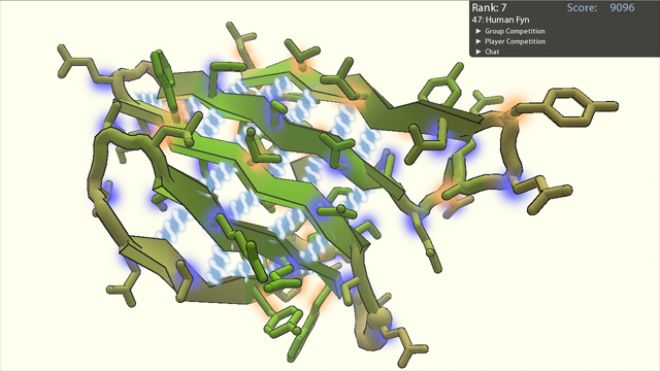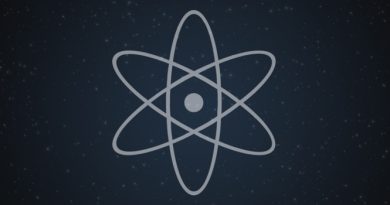Gamers Crack Retrovirus Code
It almost seems like a scene from a science fiction movie: video game players using a program to create a model of a retrovirus. But it’s actually happened, and it may pave the way to new treatments for viruses such as HIV.
At the University of Washington, gamers have achieved success where scientists have been foundering for more than a decade. Using an online program called FoldIt, players were challenged to create a three-dimensional model of a retrovirus enzyme. The game players came up with a design that was accurate enough for scientists to refine. The model also shows points of possible vulnerability, where the molecule could be targeted by drugs to deactivate the enzyme.
“We wanted to see if human intuition could succeed where automated methods had failed,” said Dr. Firas Khatib of the University of Washington Department of Biochemistry. Khatib is a researcher in the protein structure lab of Dr. David Baker, professor of biochemistry.

FoldIt was also developed at the University of Washington Center for Game Science. “The focus of the UW Center for Game Sciences,” said director Dr. Zoran Popovic, associate professor of computer science and engineering, “is to solve hard problems in science and education that currently cannot be solved by either people or computers alone.”
The game taps into players’ ability to think in 3-dimensional space, and they went through various levels to approach the problem, rotating amino acids until the model was done.
“The ingenuity of game players,” Khatib said, “is a formidable force that, if properly directed, can be used to solve a wide range of scientific problems.”
From the press release:
Direct manipulation tools, as well as assistance from a computer program called Rosetta, encourage participants to configure graphics into a workable protein model. Teams send in their answers, and UW researchers constantly improve the design of the game and its puzzles by analyzing the players’ problem-solving strategies.
Figuring out the shape and misshape of proteins contributes to research on causes of and cures for cancer, Alzheimer’s, immune deficiencies and a host of other disorders, as well as to environmental work on biofuels.
Researchers are encouraged by the idea of crowd-sourcing to develop solutions to scientific problems. Carter Kimsey, program director, National Science Foundation Division of Biological Infrastructure, observed, “After this discovery, young people might not mind doing their science homework. This is an innovative approach to getting humans and computer models to ‘learn from each other’ in real-time.”





